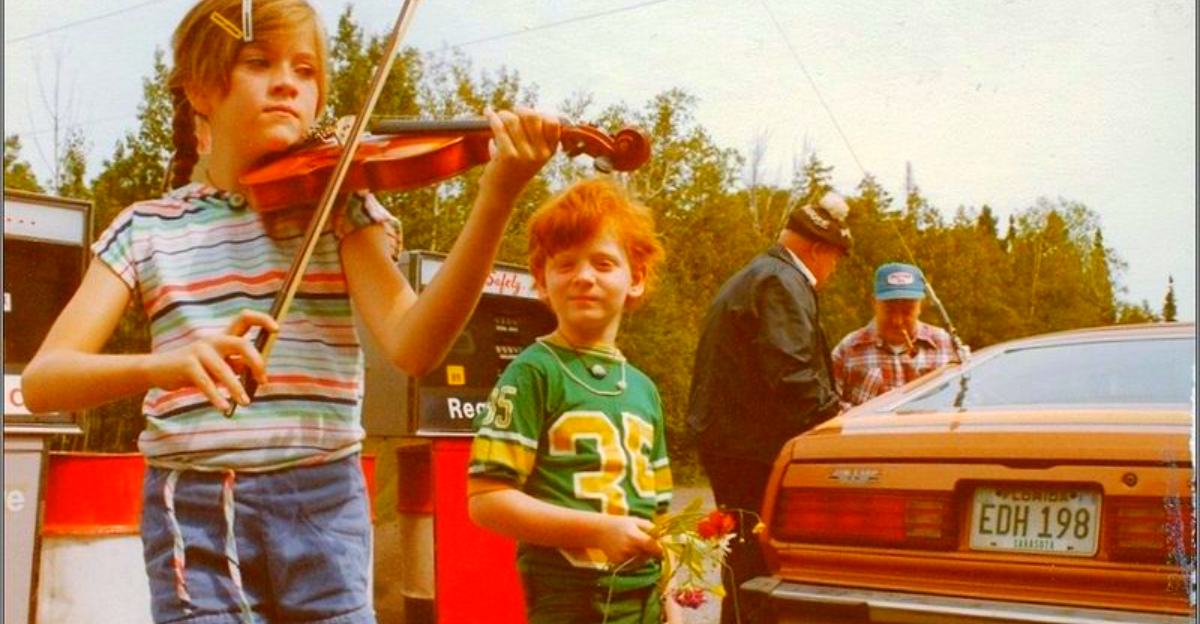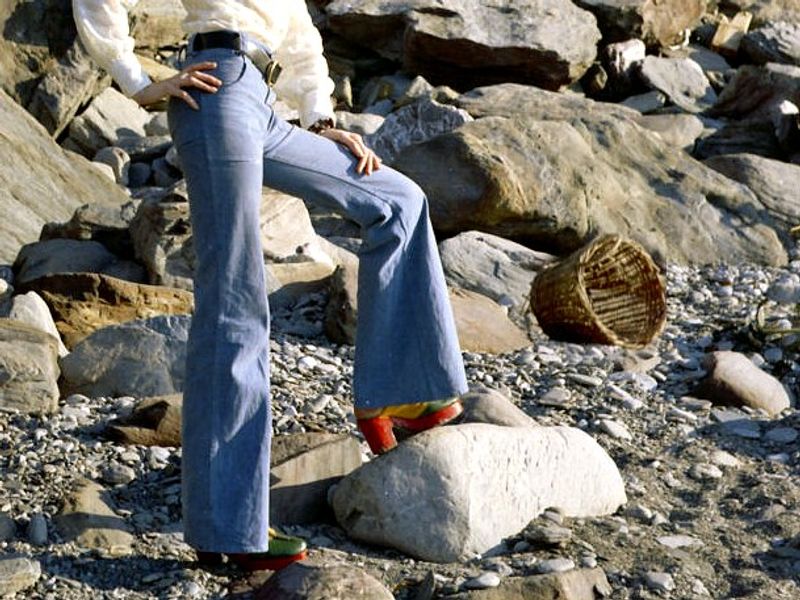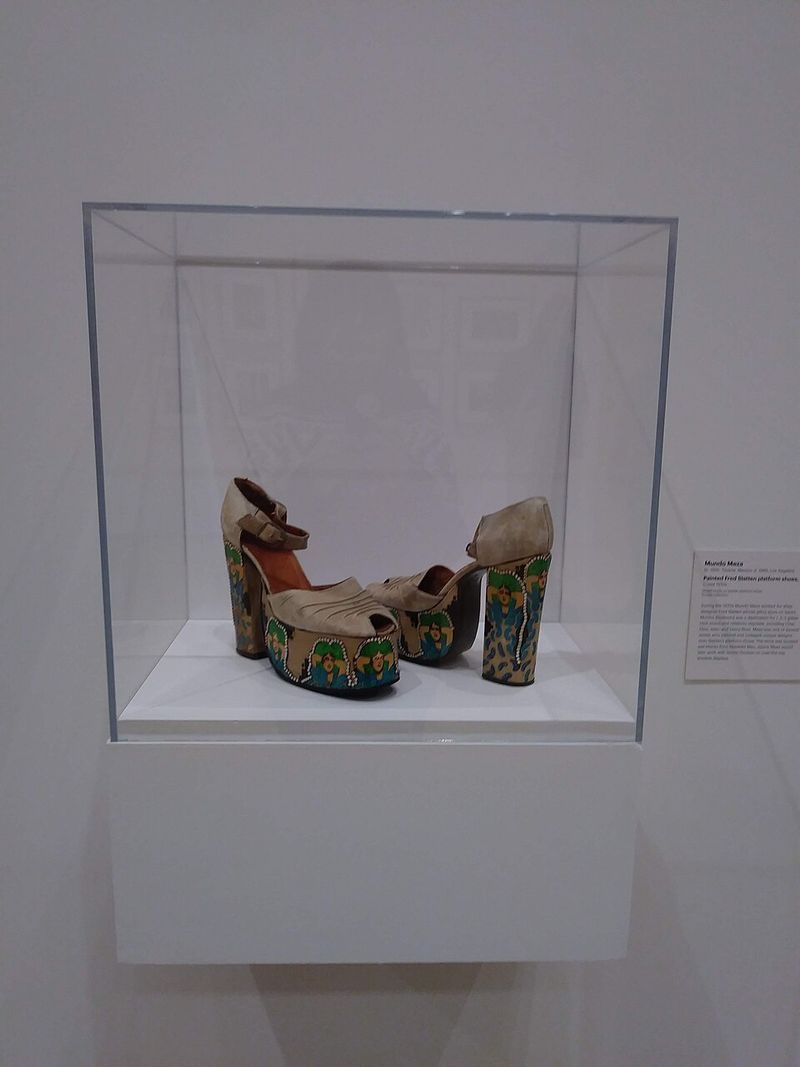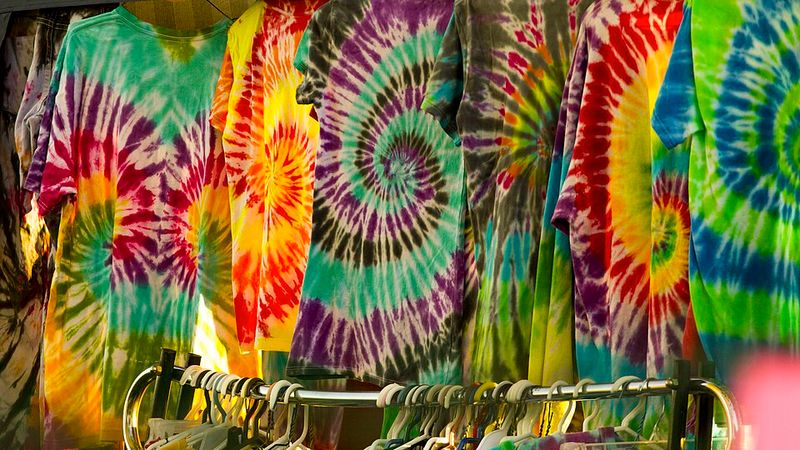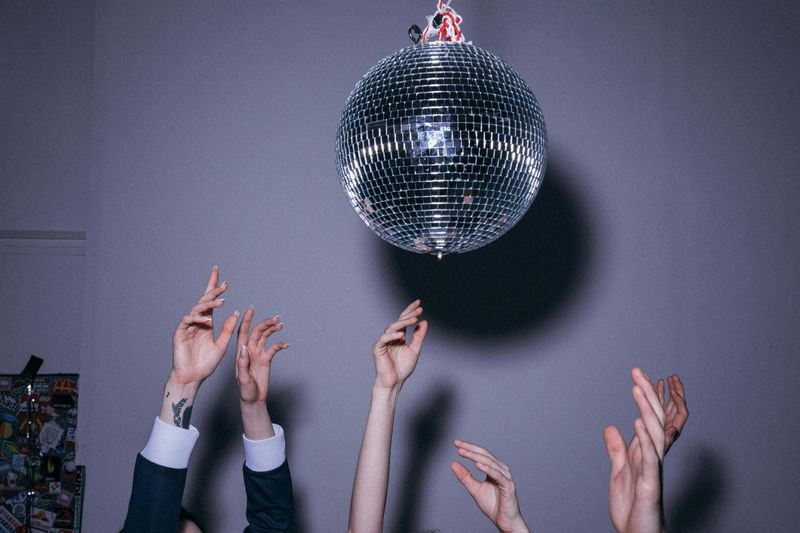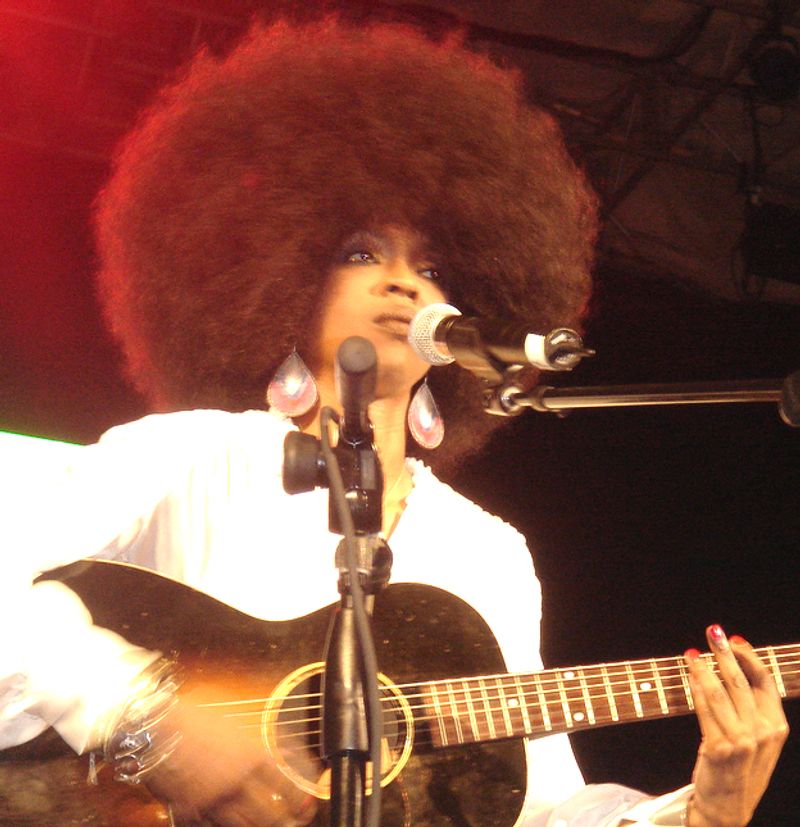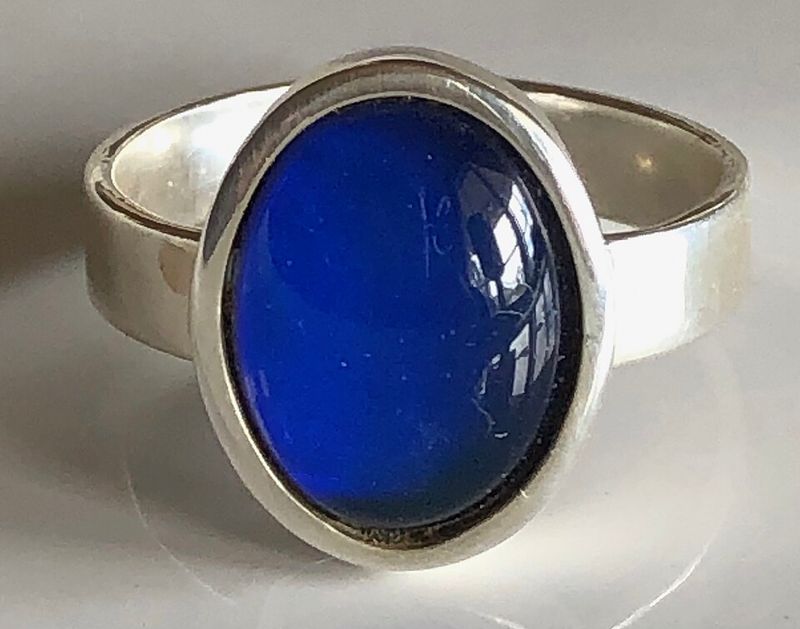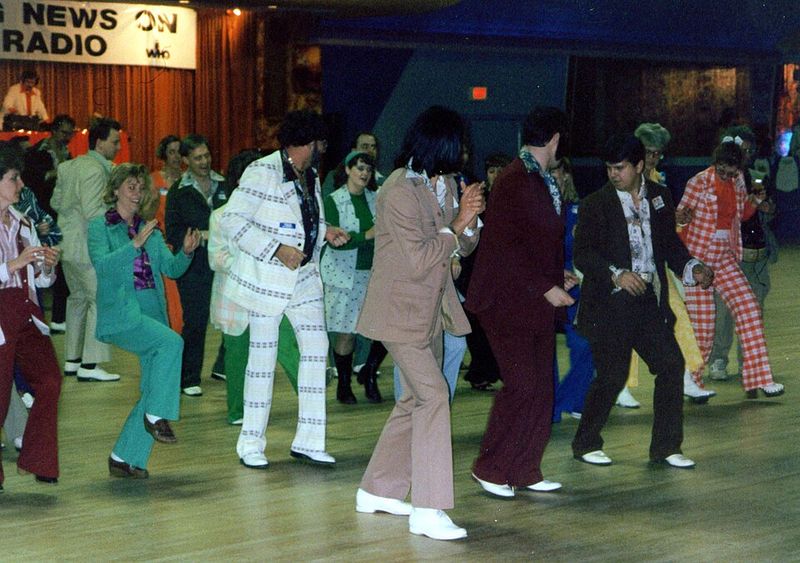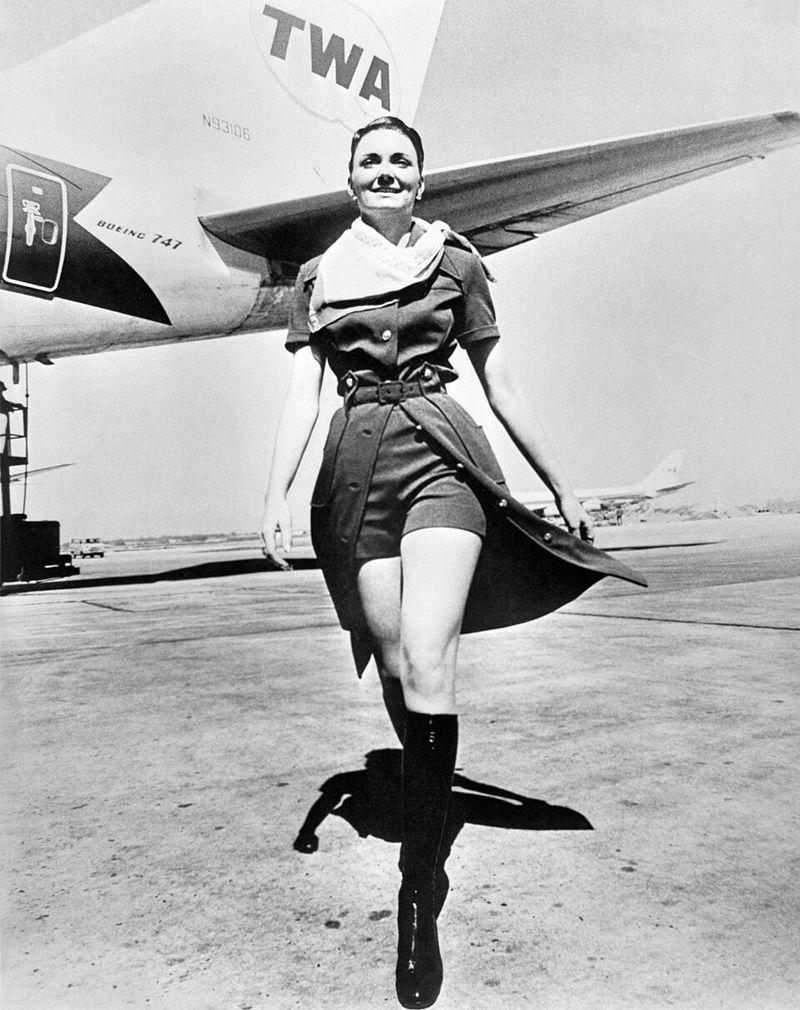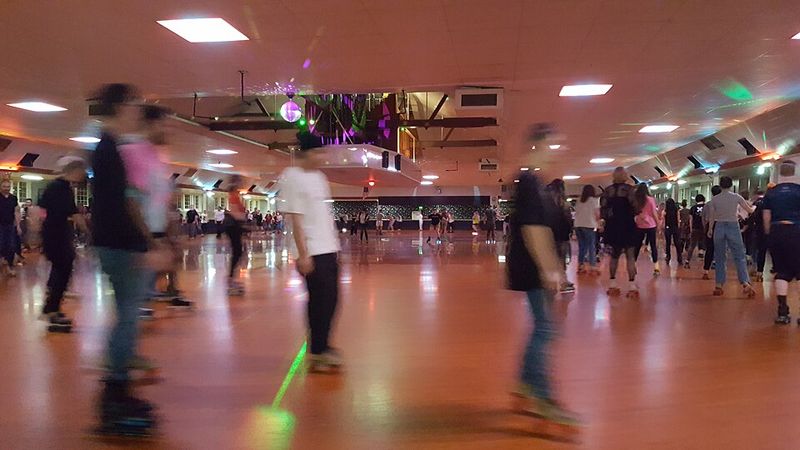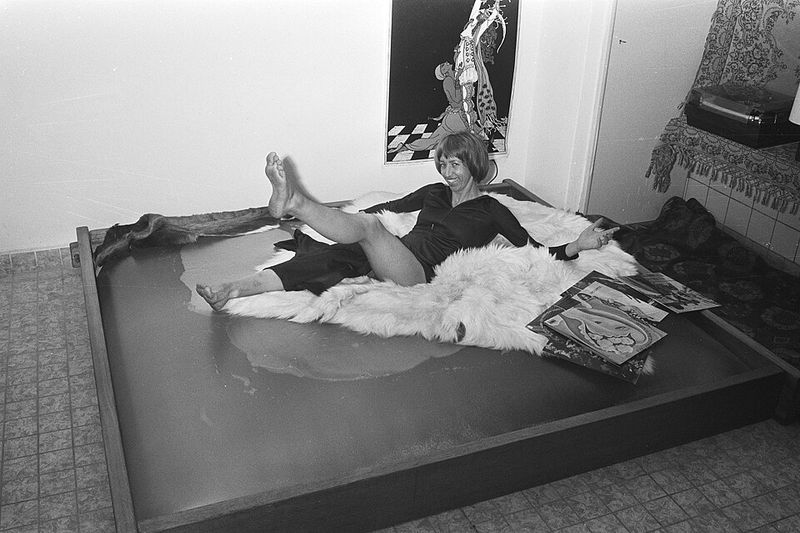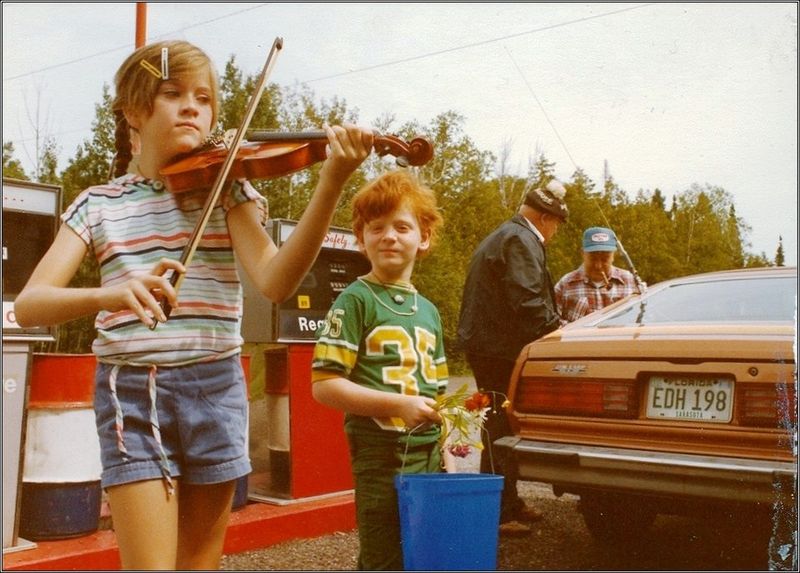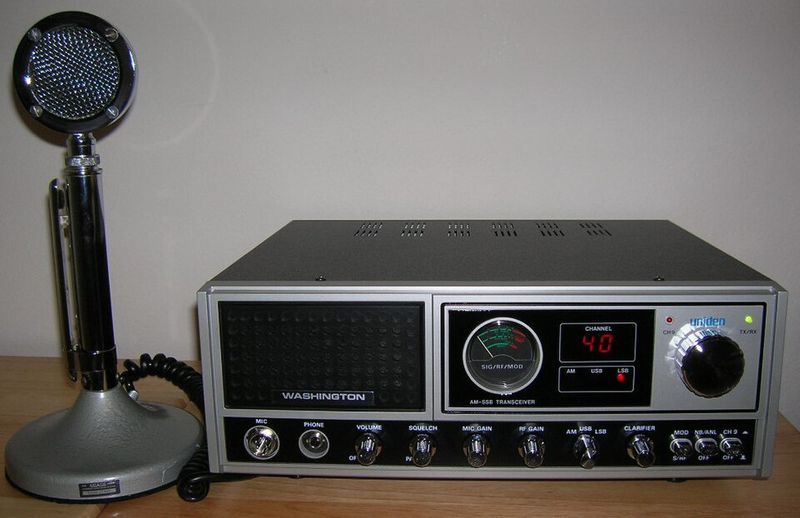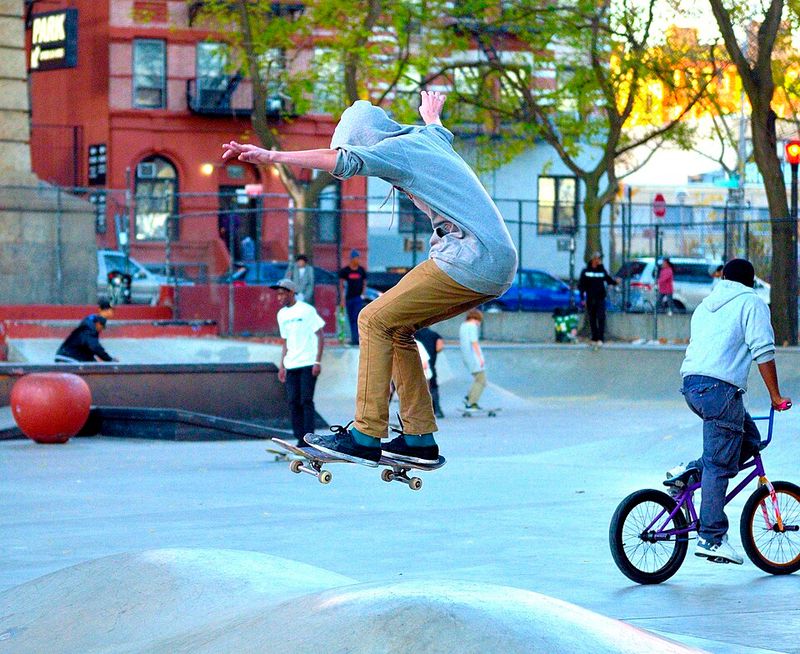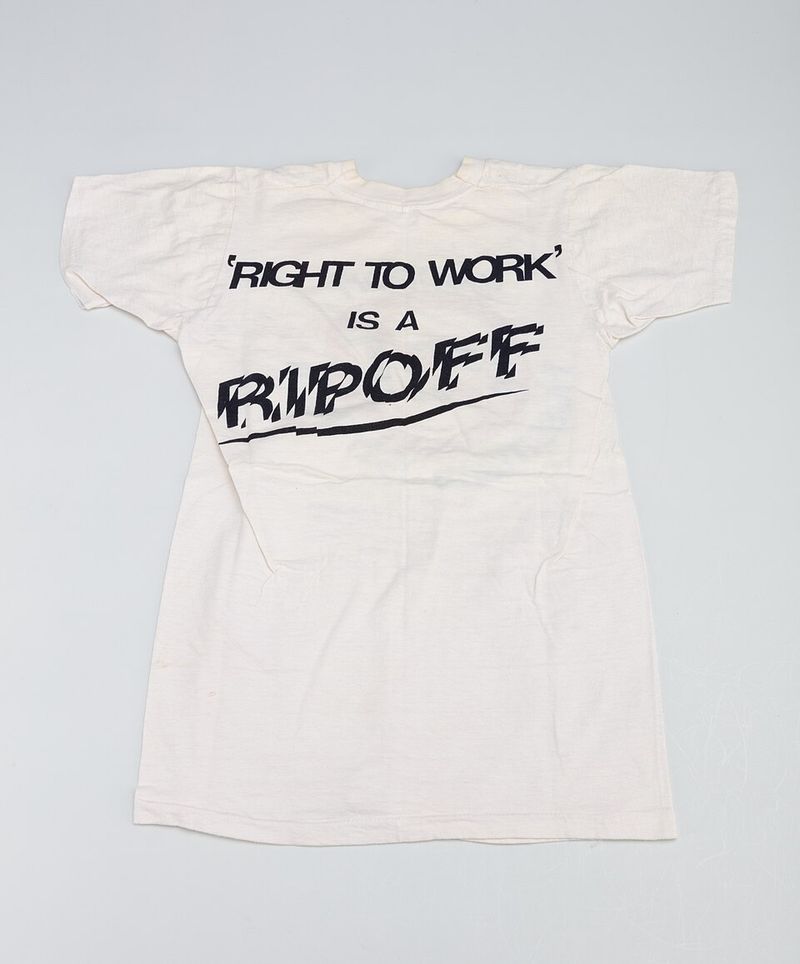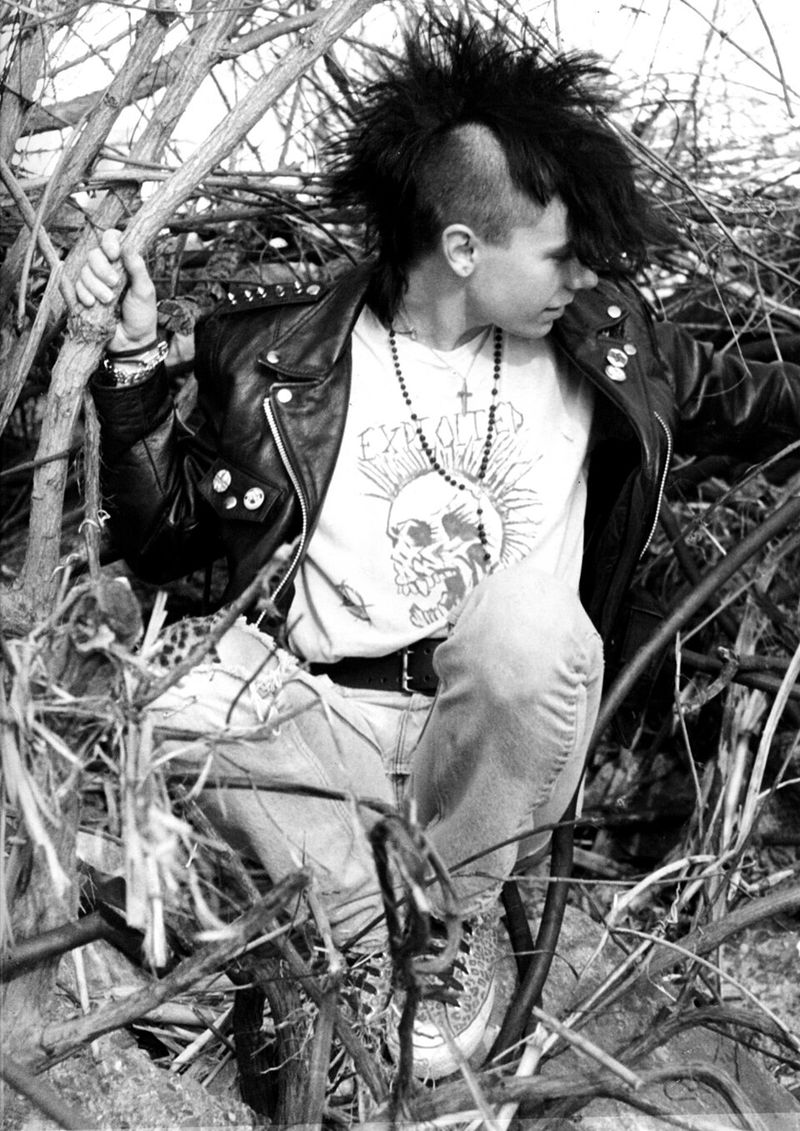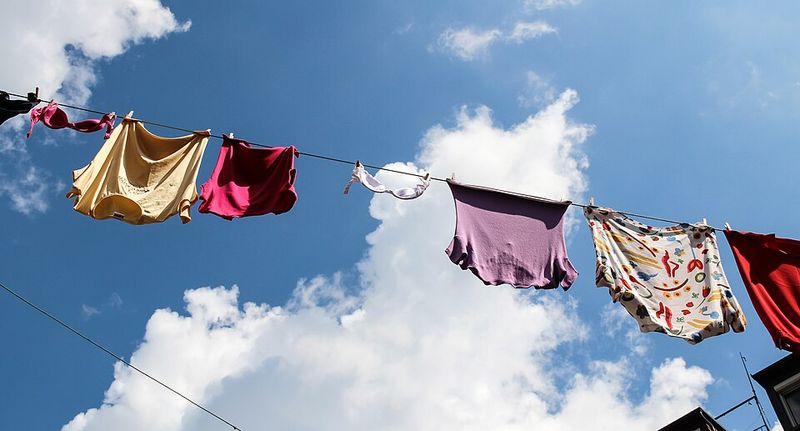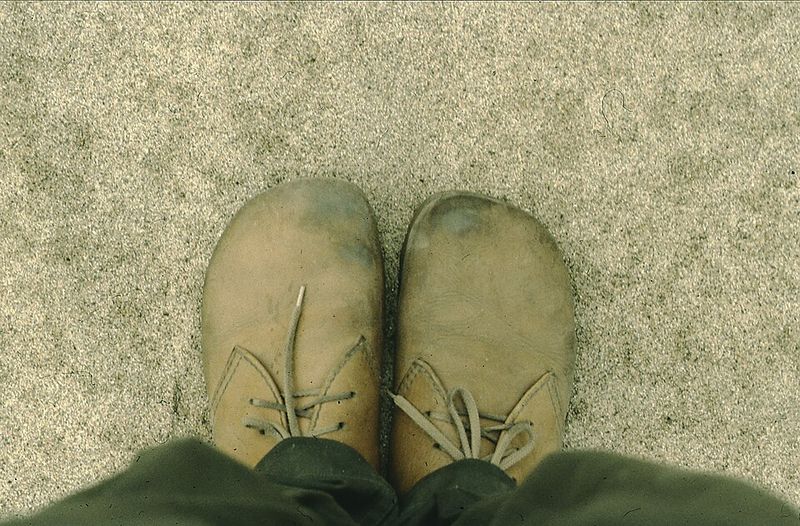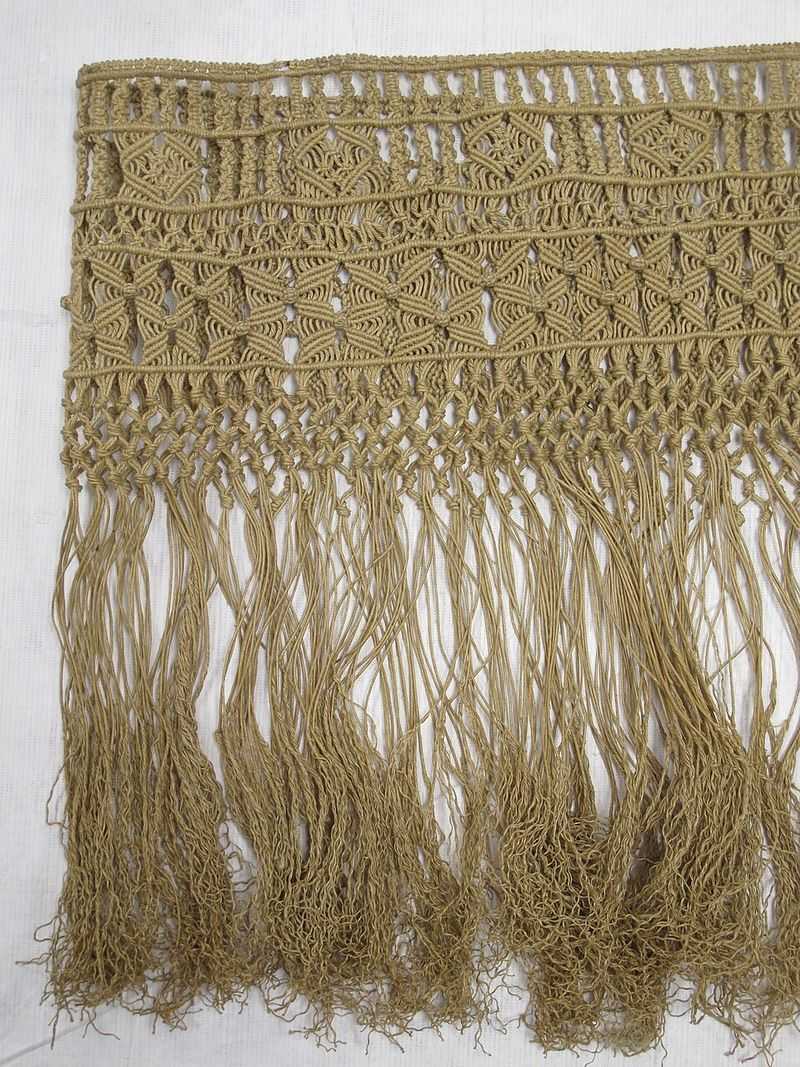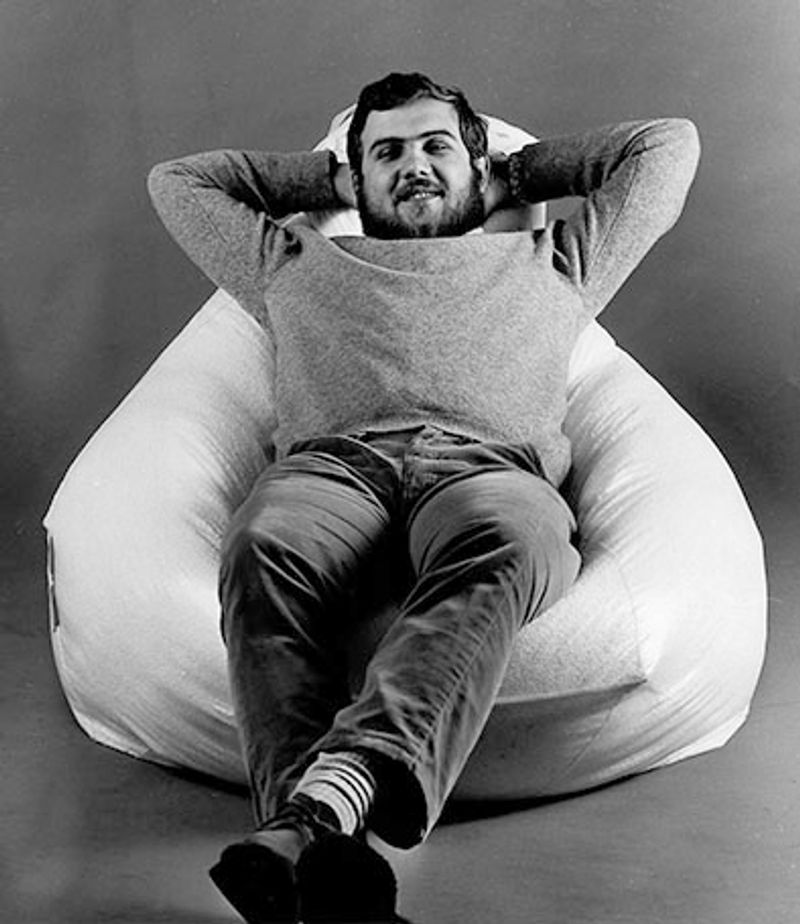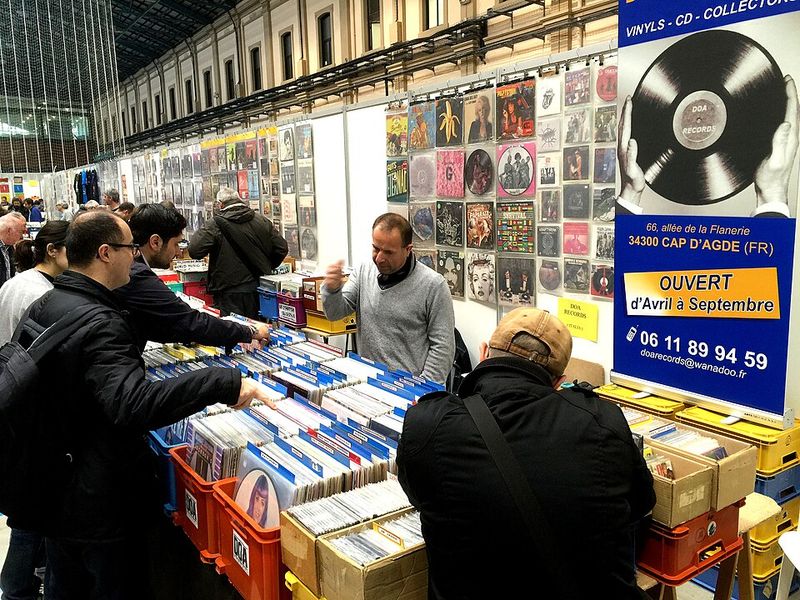The 1970s weren’t just about disco balls and bell-bottoms – they were about defiance. Beneath the glitter and polyester, many of the decade’s biggest trends were subtle acts of rebellion against conformity, politics, and tradition. Here are 23 fads from the ’70s that were more rebellious than they seemed.
1. Bell-Bottom Jeans
Bell-bottom jeans started as humble sailor attire but became a vibrant symbol of defiance in the ’70s. Their wide, rebellious flares were a deliberate break from conservative fashion norms. Youths embraced them as a statement of freedom, individuality, and non-conformity.
Worn by men and women alike, bell-bottoms challenged traditional gender expectations and celebrated personal expression. This garment’s transformation from naval uniform to cultural emblem underscores its powerful role in shaping the era’s counterculture.
The bright colors and bold patterns of these jeans made them a visual protest against the status quo, capturing the spirit of a generation eager for change and liberation.
2. Platform Shoes
Platform shoes towered above their contemporaries—literally and metaphorically. These shoes challenged gender norms, embraced by men and women alike. Their towering soles signaled a break from conventional footwear, making a bold statement on the dance floors of the disco era.
Platforms were more than just elevated fashion; they embodied a sense of daring and flamboyance. The bold designs and bright colors were expressions of individuality and defiance against mainstream style.
By strutting in these shoes, wearers were part of a cultural movement that celebrated freedom, self-expression, and the joy of standing out. Platforms encapsulated the vibrant, daring spirit of the ’70s.
3. Tie-Dye Shirts
Tie-dye shirts, with their swirling, kaleidoscopic patterns, were a vivid emblem of peace and protest. Originating in the late ’60s, tie-dye remained popular in the ’70s, continuing its legacy of rejecting uniformity.
These shirts were homemade masterpieces, each unique and symbolizing individuality. They were a quiet revolt against the mass-produced fashion industry, championing personal creativity and artistic freedom.
Tie-dye’s vibrant colors and carefree designs captured the hopeful spirit of a generation eager to express love, peace, and non-conformity through their clothing. Wearing tie-dye was an artistic rebellion in a world craving change.
4. Disco Dancing
Disco dancing was far more than just a pastime; it was a cultural movement. The disco scene provided a sanctuary for marginalized communities, allowing them freedom and expression through music and dance.
Under the glittering lights of the disco ball, individuals transcended societal constraints, finding acceptance and joy. Disco celebrated diversity, uniting people across racial, sexual, and cultural boundaries.
The energetic beats and vibrant atmosphere symbolized liberation and defiance against a world of repression and conformity. Disco dancing was not just about rhythm but about reclaiming identity and celebrating life unapologetically.
5. Afros
The Afro, a powerful emblem of Black pride, was more than just a hairstyle. It represented resistance to Eurocentric beauty standards and a celebration of African heritage. This bold, natural look became a symbol of empowerment and identity.
Wearing an Afro was a declaration of self-acceptance and racial pride, challenging societal norms that had long dictated beauty ideals. It was both a personal and political statement, resonating deeply with the civil rights movement.
The Afro’s striking silhouette was not just a fashion choice; it was a radical assertion of dignity, strength, and unity within the Black community.
6. Mood Rings
Mood rings, those whimsical baubles from the ’70s, captured the era’s fascination with self-awareness and introspection. These rings, which changed colors supposedly based on emotions, were both playful and profound.
While marketed as novelties, mood rings tapped into a growing desire for personal expression and understanding. They symbolized a curiosity about the self and an interest in exploring inner emotions.
Beyond their hues, mood rings reflected a broader cultural shift towards individualism and the quest for authenticity. Wearing one was a subtle rebellion against a world that often suppressed emotional expression.
7. Leisure Suits
Leisure suits, with their wide lapels and synthetic fabrics, were a sartorial declaration of independence. These suits defied traditional business attire, embracing a laid-back, anti-establishment lifestyle.
The casual elegance of leisure suits captured the spirit of a decade eager to break free from corporate constraints. Their vibrant colors and relaxed fit spoke to a newfound freedom and confidence.
By stepping into a leisure suit, individuals signaled a departure from formality and an embrace of personal comfort and style. These suits were more than clothing; they were a statement of rebellion against the corporate world.
8. Hot Pants
Short and daring, hot pants were a bold fashion choice that epitomized women’s newfound sexual liberation in the ’70s. These scandalously short shorts embodied body confidence and a rebellion against conservative norms.
Hot pants were more than just a trend; they represented a shift in societal attitudes towards women’s autonomy and freedom of expression. By wearing them, women challenged traditional ideas of modesty and femininity.
These garments captured the decade’s spirit of change, reflecting a cultural shift towards empowerment and self-expression. Hot pants were a vivid symbol of a generation eager to embrace new freedoms and possibilities.
9. Roller Skating
Roller skating was more than a pastime; it was a vibrant expression of community and joy. Rinks became cultural hubs where racial and cultural divides were crossed through music and movement.
This activity offered a sense of freedom and escape from societal pressures, as skaters glided and grooved to the beat of the ’70s. Roller skating was a celebration of individuality and social connection.
The rink’s colorful lights and infectious energy made it a place where people could express themselves without judgment. Roller skating captured the decade’s desire for liberation and unity on the dance floor.
10. Waterbeds
Waterbeds made waves in the ’70s, offering a unique sleeping experience that went beyond comfort. They symbolized a sensual, unconventional lifestyle that defied suburban norms.
These beds, often found in the homes of the free-spirited, were an emblem of the decade’s embrace of alternative lifestyles. Their undulating surfaces represented a departure from traditional notions of rest and relaxation.
Owning a waterbed was a statement of rebellion against conformity, an embrace of creativity and pleasure. This quirky piece of furniture reflected a broader cultural shift towards freedom and exploration.
11. Puka Shell Necklaces
Puka shell necklaces, with their simple beauty, captured the essence of laid-back rebellion against rigid societal norms. Inspired by island life, they became symbols of freedom and adventure.
These necklaces were embraced by surfers and free spirits, representing a connection to nature and a break from structured fashion. Wearing one was an act of defiance against East Coast preppy culture.
In the ’70s, puka shells adorned the necks of those who valued authenticity and the natural world. They were more than accessories; they were expressions of a carefree lifestyle and a love for the ocean’s beauty.
12. Feathered Hair
Feathered hair, with its effortless elegance, defined the decade’s embrace of natural beauty. Popularized by icons like Farrah Fawcett, it marked a departure from rigid coiffures of earlier eras.
This style was celebrated for its soft, flowing layers that framed the face, capturing a sense of casual confidence and grace. Feathered hair symbolized a break from traditional beauty standards.
It was more than a hairstyle; it was a statement of individuality and self-assuredness. Embracing feathered hair was an act of rebellion against conformity, celebrating personal style and a laid-back, natural look.
13. CB Radios
CB radios, a staple of the ’70s, offered unregulated communication that thrilled users. These radios became the voice of truckers and youth, symbolizing autonomy and connection.
In an era before mobile phones, CB radios allowed individuals to bypass traditional communication channels, fostering a sense of community and rebellion against corporate media. Their popularity reflected a desire for freedom and direct interaction.
Using a CB radio was a small but significant act of defiance, an embrace of technology that empowered the individual. It captured the decade’s spirit of exploration and connection on the open road.
14. Pet Rocks
Pet rocks, those lovable lumps, were more than a quirky fad. They satirized consumer culture, poking fun at the absurdity of buying into trends for the sake of novelty.
Marketed with humorous instructions, pet rocks became a playful critique of society’s fixation on possessions. These “pets” required no care, making them a tongue-in-cheek commentary on modern life’s complexities.
This fad reflected a growing awareness of consumerism, encouraging people to question the value and meaning of their purchases. Pet rocks were a clever rebellion against the commercialization of everyday life in the ’70s.
15. Skateboarding
Skateboarding, originating as “sidewalk surfing,” evolved into an anti-authoritarian sport in the ’70s. It defied traditional athletics, embracing freedom and creativity.
Born in California, skateboarding was a rebellious answer to structured sports, attracting those who wanted to carve their own paths. It symbolized a departure from conventional recreation.
The sport’s DIY ethos and daring tricks captured a spirit of defiance and innovation. Skateboarding was more than a pastime; it was a movement that challenged norms and celebrated individuality and boldness.
16. Feminist Slogans on T-Shirts
T-shirts emblazoned with feminist slogans became powerful tools of protest in the ’70s. Messages like “A Woman’s Place Is in the House… and the Senate” turned fashion into a platform for advocacy.
These shirts were worn proudly, spreading awareness and challenging gender inequalities. They symbolized empowerment and the growing feminist movement’s fight for equality and representation.
By wearing these slogans, women transformed everyday clothing into declarations of intent and defiance. These T-shirts were not just garments; they were calls to action, demanding change in a world resistant to it.
17. Punk Fashion
Punk fashion, with its raw edge and DIY aesthetic, was a direct affront to capitalism and conformity. Safety pins, ripped clothes, and mohawks became symbols of rebellion against the music industry and societal norms.
Emerging as a counterculture movement, punk encouraged individuality and anti-establishment attitudes. Its fashion was deliberately provocative, challenging mainstream aesthetics and values.
Punk was more than a style; it was a lifestyle that rejected consumerism and embraced authenticity. This fashion movement captured the spirit of a generation eager to disrupt and redefine cultural norms.
18. No-Bra Movement
The no-bra movement, a natural evolution from ’60s feminism, represented bodily autonomy and liberation from restrictive garments. It challenged societal expectations surrounding femininity and modesty.
Women embraced this movement to protest against objectification and reclaim control over their bodies. It symbolized freedom and a shift towards more authentic self-expression.
Choosing not to wear a bra was a powerful statement of independence and defiance. This movement was about more than comfort; it was about challenging norms and embracing personal choice in a changing world.
19. Earth Shoes
Earth shoes, with their unconventional “negative heel” design, symbolized a return to nature and a rebellion against modernity. They offered an alternative to traditional footwear, promoting balance and well-being.
These shoes reflected a broader cultural shift towards environmental consciousness and self-awareness. Their unique design encouraged wearers to consider their connection to the earth.
Choosing Earth shoes was a statement of individuality and a departure from mass-produced fashion. They captured the spirit of a decade exploring new paths and seeking harmony with the natural world.
20. Macramé
Macramé, with its intricate knots and handwoven designs, was a revival of craft and self-sufficiency. This handmade art form was a quiet rebellion against industrial consumer culture.
Popular in home decor, macramé brought a personalized touch to interiors, symbolizing a desire for authenticity and connection to craft. It was a countercultural embrace of creativity.
Creating macramé was both meditative and expressive, allowing individuals to infuse their homes with personality and warmth. This craft captured the decade’s yearning for simplicity and meaningful artistry.
21. Bean Bag Chairs
Bean bag chairs were more than just furniture; they were a rejection of traditional decor. Their soft, shapeless form embraced comfort over conformity, deflating the stiffness of conventional living.
These chairs offered a relaxed, informal vibe, embodying the decade’s desire for freedom and ease. They were symbols of an anti-establishment lifestyle, favoring laid-back living.
Bean bag chairs reflected a cultural shift towards individuality and flexibility in personal spaces. They were a playful statement against rigid norms, capturing the essence of a generation seeking comfort and creativity.
22. Vinyl Record Collecting
Vinyl record collecting was an act of rebellion against commercialization. In a world moving towards homogenized pop culture, owning physical music was an expression of identity.
Records offered a tangible connection to music, allowing collectors to explore diverse genres and artisanal album artistry. This analog treasure trove reflected a longing for authenticity.
By curating personal collections, enthusiasts resisted the ephemeral nature of mass media. Vinyl collecting was a celebration of individuality and a dedication to the richness of musical heritage.
23. Van Customization
Customizing vans became the ultimate act of rebellion and freedom. These mobile homes were canvases for psychedelic art and personal expression, embodying the spirit of the open road.
Van culture symbolized individuality and a desire to escape societal constraints. The plush interiors and vibrant exteriors were statements of creativity and a longing for adventure.
Living the van life was a rejection of conventional living, embracing mobility and exploration. Customized vans captured the decade’s essence of freedom and a pursuit of self-discovery.
